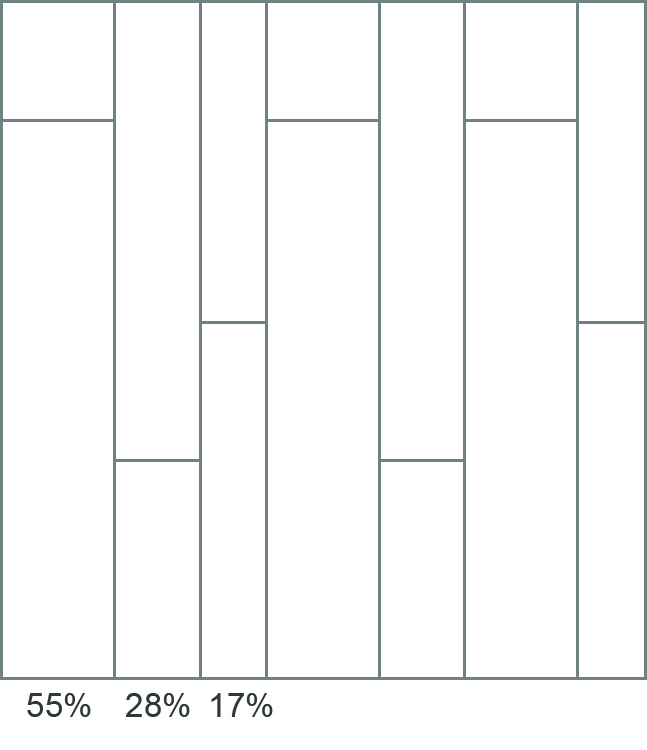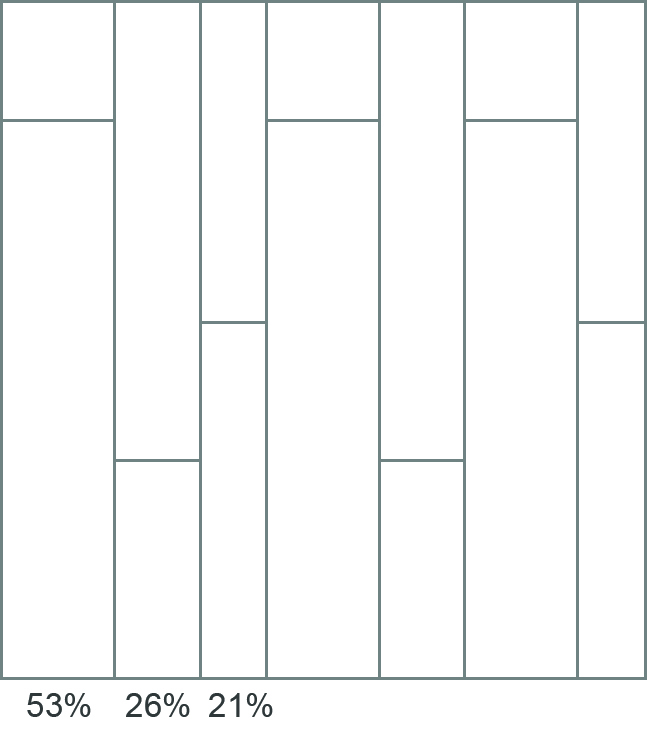Main laying patterns

Bridge deck laying.
Strips of equal size are arranged lengthwise so that each strip head joint is in the same central line or in any case in a constant position compared to each strip that forms the previous row. The bridge deck laying procedure has to comply with the same laying instructions of the ship’s deck laying.
Irregular bridge deck or ship’s deck or running laying.
Strips with different lengths are arranged lengthwise so that the head joint of each strip is in a random position or in a different position from the previous or following head joint.

Multiple Widths.
| All the Slim Collection Items are available also on “multi-widths” as following: 180 mm (7 1/16”) width (55%), 140 mm (5 1/2”) width (28%) and 84 mm (3 11/32”) width (17%). |  |
| The products on Stilnovo, Contemporary, Crafted and Smoked Collections are all available on “multi-widths” as following: 240 mm (9 1/2”) width (53%), 180 mm (7 1/16”) width (26%) and 140 mm (5 1/2”) width (21%). |  |

Herringbone laying.
Strips with different lengths are arranged lengthwise so that the head joint of each strip is in a random position or in a different position from the previous or following head joint.

Hungarian herringbone laying.
Strip’s shortest sides are 30° or 60° cut with respect to longest sides. This laying method is the same as the herringbone laying method.
French herringbone laying.
Strip’s shortest sides are 45° cut with respect to longest sides. This laying method is the same as the herringbone laying method.

Square basket laying.
Strips are arranged to form a square.
Band connecting element.
This procedure regards the floor perimeter finishing. It consists of wooden strips with different laying patterns (band) compared to predominant patterns (central rug) and additional strips positioned as connecting elements (connecting element) between different laying patterns.